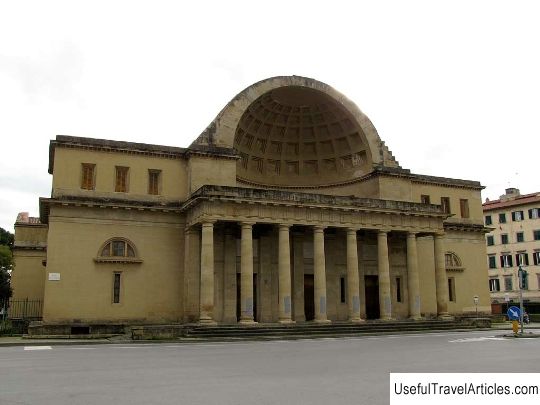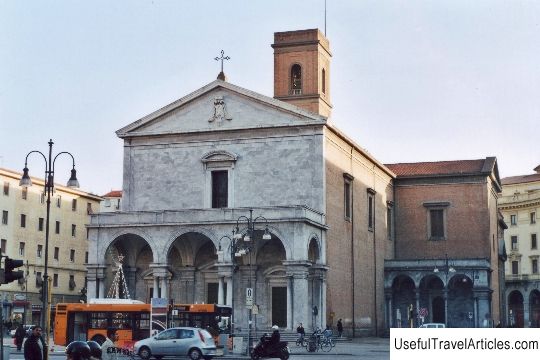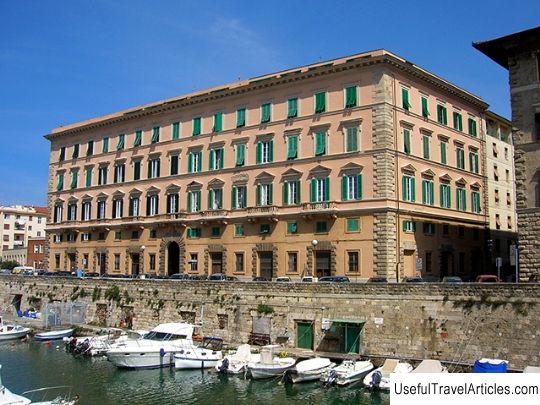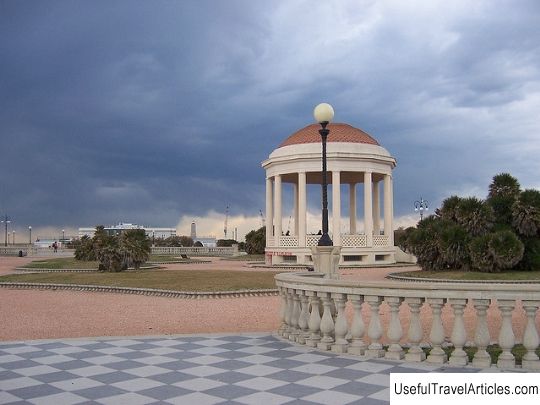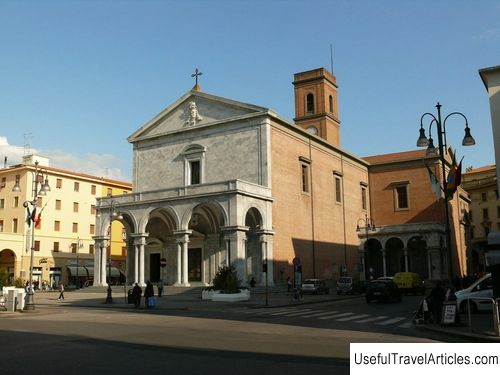Cisternoni di Livorno building description and photos - Italy: Livorno
Rating: 8,5/10 (2543 votes) Cisternoni di Livorno building description and photos - Italy: Livorno. Detailed information about the attraction. Description, photographs and a map showing the nearest significant objects. The title in English is Cisternoni di Livorno. Photo and descriptionCisternoni di Livorno are three huge neoclassical buildings, erected between 1829 and 1848 as part of the Leopoldino aqueduct water treatment complex and reservoirs. The fourth Chternone, which was to appear in the Castellaccia area, was never built. Translated from the Italian language "chternone" means "huge cistern". They supply the city, which is today a major Mediterranean port, with fresh water. In addition, the cisterns, designed by the architect Pasquale Pochcianti, are an example of an aesthetic approach to the design of utilitarian structures. The Leopoldino Aqueduct, also known as the Aqueduct di Colognole, and the neoclassical cisterns of Livorno were part of a project not only to supply the city with water, but also for its cleaning. The centerpiece of the project was an approximately 18 km long aqueduct that brought water from Colognele. This engineering masterpiece was commissioned in 1816, long before the final completion of construction. Until 1912, the aqueduct was the city's only water supplier. Construction of the aqueduct began in 1793 by order of Duke Ferdinad III and by architect Giuseppe Salvetti. In 1799, work stopped due to the death of Salvetti due to political differences that arose in Tuscany during the Napoleonic wars. Only in 1806, Queen Maria Louise ordered to continue the construction of the aqueduct - work continued until 1824. Subsequently, the structure of the aqueduct was modified more than once. La Gran Conserva, also known as Ile Cisternone, is Livorno's largest and most famous covered cistern. It was built in 1829-42 according to the project of Pasquale Pochcianti. In 1833, in order to commemorate the wedding of the reigning Tuscan Duke Leopoldo II and Marie Antoinette, the facade of the Gran Cannery was completed ahead of schedule, although the entire structure remained inoperative until 1842. Today the structure has a surreal appearance, thanks to its dome, which was inspired by the Roman Pantheon. A smaller cistern, Cisternino di Pian di Rota, was built in 1845. It is also made in a neoclassical style, but at the same time it resembles the Palladian villas of Veneto. The symmetrical facade is crowned with a massive prostyle-shaped portico, and inside is a huge rectangular reservoir. Finally, Cisternino di citta was built in 1848. It is notable for its large loggia with Ionic columns and narrow windows. This building has never been used for storing water, and since 1945 has been the city's cultural center.          We also recommend reading Giulianova description and photos - Italy: Adriatic Riviera Topic: Cisternoni di Livorno building description and photos - Italy: Livorno. |
